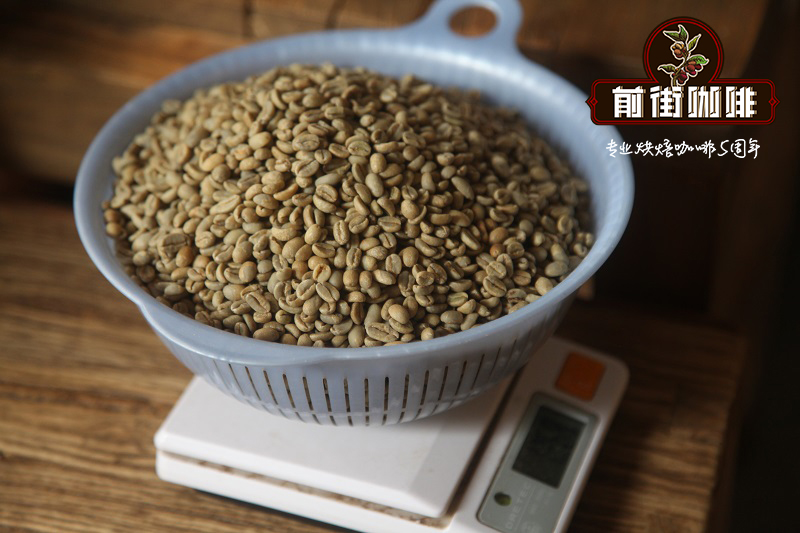Flavor and taste of 90 kinds of sun-dried beans from heroin farmer IHCafe in St. Vincent processing Plant, Honduras

Professional coffee knowledge exchange more coffee bean information please follow the coffee workshop (Wechat official account cafe_style)
What are the flavor and taste characteristics of 90 kinds of sun-dried beans from San Vincent processing plant heroin farmer IHCafe? What kind of coffee are the 90 varieties of IHCafe?
Product name: Honduras Beneficio San Vicente Jairo Galeas IHCAFE 90 Natural
Producer: Jairo Galeas
Variety: IHCAFE 90
Treatment: insolation
Flavor: dark fruit, plum wine, strong fermentation, high consistency, whisky finish.
Coffee in Honduras has always been famous for its mild and elegant flavor. at present, the mode of coffee production in Honduras is mainly small farmers, accounting for more than 60% of the total production. However, have you ever wondered why Saint Vincent is often found in the long list of names of Honduran coffee beans? So let's first talk about the background of this processing plant.
The Saint Vincent processing Plant (Beneficio San Vicente) is arguably the most famous processing plant in Honduras, with a scale and reputation created by the Paz family after decades of hard work.
Founder Fidel Paz has been in the coffee business since the early 1980s. Since then, Fidel Paz has spent decades on many production and processing links to improve the reputation of Honduran coffee beans, and as international coffee bean prices rose, he also encouraged more local villagers to join the industry.
After 20 years of hard work, the St. Vincent processing plant was very successful in early 2000, when Fidel's children and nephews grew up, and the younger generation joined the ranks with more knowledge of agriculture, sales and baking. at about this time, the trend of "single small farmer" and "micro-batch" processing also began, and many coffee beans with this background came to the fore in the COE competition.
In 2009, there are children in the Paz family who have grown up and joined the young new force. each batch of coffee beans have to go through the professional cup test and classification of the processing plant and strict quality control before they can be produced. they work harder to be communicators between farmers and bakeries of all sizes, injecting new ideas and practical practices, and are committed to maintaining the best quality and flavor from beginning to end.
St. Vincent's processing plant is committed to more than just production and processing. It has been invested and cultivated for decades in coffee producing areas, import and export trade and roasting methods. When it comes to coffee from Honduras, most people think of St. Vincent's processing plant. The Excelsior character handed down from generation to generation has turned St. Vincent into a representative symbol of Honduran boutique coffee, while St. Vincent's acquisition of the surrounding small farmer coffee beans has greatly helped its knowledge, technology and economy, so the coffee produced is high in sweetness and rich in fruit flavor, which is always amazing.
What is IHCAFE 90? ]
We seldom hear of this breed in Taiwan, but it is a child born in Honduras.
IHCAFE 90, a new variety developed and named by the Hondure ñ odelCaf é Institute in Honduras in the 1980s, is a hybrid of East Timor and Kaddura (Timor x Caturra). This variety is not very tall, easy to take care of and harvest, and is resistant to leaf rust. It was planted in Honduras in the 1980s and is a high-yield coffee variety that can be grown at lower altitudes. The palate is rich in layers, with sweet aromas of caramel, mango and citrus, and body is also very thick.
Important Notice :
前街咖啡 FrontStreet Coffee has moved to new addredd:
FrontStreet Coffee Address: 315,Donghua East Road,GuangZhou
Tel:020 38364473
- Prev

Honduran boutique coffee beans COE 17th Valentine Manor Pacas Flavor and mouthful of washed beans
Professional coffee knowledge exchange more coffee bean information please follow the coffee workshop (Wechat official account cafe_style) Honduran boutique coffee beans COE 17th Valentine's Manor Pacas seed water washed beans flavor and taste characteristics? Flavor description: citrus, BlackBerry, honey, chocolate, strong aroma, orange juice taste, round, sweet, soft and smooth. Award winning record: Hongdu, 2017
- Next

What is the variety of Yunnan coffee? the taste characteristics of Yunnan small grain coffee iron pickup and Katim flavor.
Professional coffee knowledge exchange more coffee bean information please follow the coffee workshop (Wechat official account cafe_style) Yunnan small grain coffee, Rubiaceae, coffee genus, planting areas are mainly distributed in Lincang, Baoshan, Simao, Xishuangbanna, Dehong and other prefectures. Small grains of coffee are native to Ethiopia or Arabian Peninsula. The main producing area of small-grain coffee is suitable to grow at an altitude of 80.
Related
- Detailed explanation of Jadeite planting Land in Panamanian Jadeite Manor introduction to the grading system of Jadeite competitive bidding, Red bid, Green bid and Rose Summer
- Story of Coffee planting in Brenka region of Costa Rica Stonehenge Manor anaerobic heavy honey treatment of flavor mouth
- What's on the barrel of Blue Mountain Coffee beans?
- Can American coffee also pull flowers? How to use hot American style to pull out a good-looking pattern?
- Can you make a cold extract with coffee beans? What is the right proportion for cold-extracted coffee formula?
- Indonesian PWN Gold Mandrine Coffee Origin Features Flavor How to Chong? Mandolin coffee is American.
- A brief introduction to the flavor characteristics of Brazilian yellow bourbon coffee beans
- What is the effect of different water quality on the flavor of cold-extracted coffee? What kind of water is best for brewing coffee?
- Why do you think of Rose Summer whenever you mention Panamanian coffee?
- Introduction to the characteristics of authentic blue mountain coffee bean producing areas? What is the CIB Coffee Authority in Jamaica?

